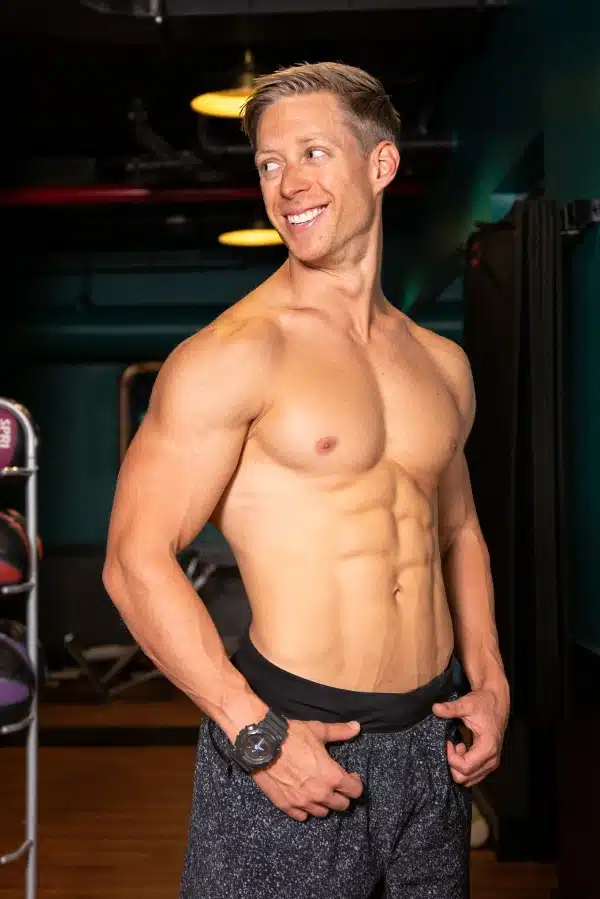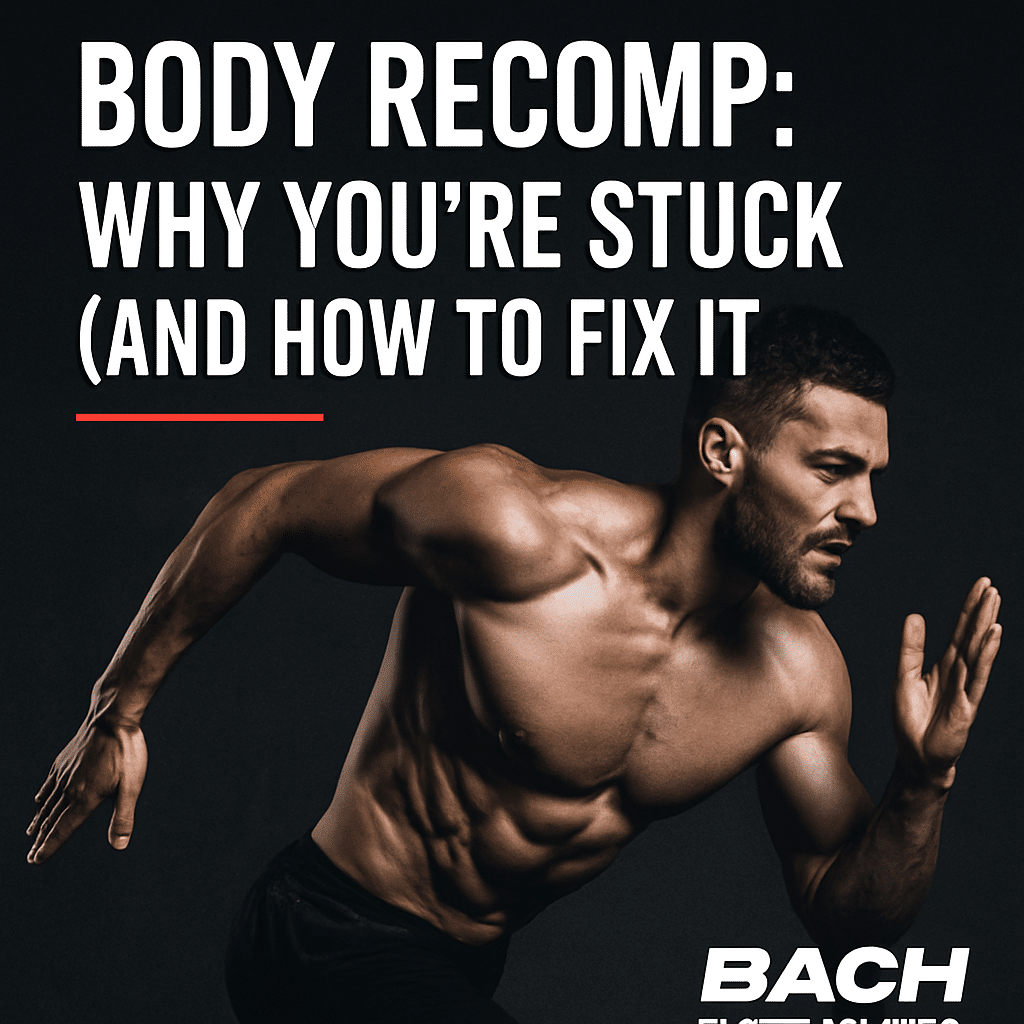Is Bad Posture Killing You?
August 17, 2017
Guest Post By Darin Hulslander
Posture counts. A lot. Among the most neglected of health topics, good posture is crucially important to leading a happier and healthier life.
This post explains what you need to know about fixing your posture problems.
As a trainer with over 10,000 hours of coaching experience often invited by Fortune 500 companies to help solve employee health issues, the first thing I assess is posture.
Surprised? Join the club.
But here’s the good news. The takeaways from this post are the three things you can do right now to improve your posture.
Want more? Download my 5 Secrets to Supercharge Your Energy guide. In just a few minutes, you will learn how to supercharge your energy levels so you can live the happy life you deserve.
Why Posture Matters
Poor posture has effects on the body that can resonate from head to toe. Breathing problems, arthritis, muscle pain, fatigue, digestive problems, and even energy and emotional levels can be affected by your posture.
Energy Levels. Posture can affect your energy levels. Research has shown that if you slouch or walk more sluggishly, you’re likely to have less energy throughout the day as well.
Posture and breathing. Let’s try an experiment. Lean forward. Try to take a big breath in and out. Not too easy, is it? We lose up to 30% of our lung capacity when we breathe with poor posture. If we take 23,000 breaths in a day like this, how do you think our bodies are adapting?
Now try to take a big breath with your head up, chest out, and shoulders back. Much easier, right?
Posture and muscle pain. When you lean forward, your head can seem to weigh a lot more than it truly does. In my online coaching programs, I assess posture from both the front and side. I’ve seen forward head positions so bad that it effectively makes your head weigh 30,40, sometimes 50+ pounds. That’s a lot of stress on your neck, right? Imagine it having to hold 50lbs up all day long.
The same can go for the back. When you lean forward you are adding additional compression to our spine. Over time, receptive positions can lead to structural changes of the discs, ligaments, and muscles surrounding the spine. These changes are one of the main causes of low back pain.
Over 50% of people live with some form of chronic pain, whether it be from the shoulders, neck, back, knees, or elsewhere. One of the primary factors for this is bad posture. But we are always aware of the issue.
And everyone is different. There’s no one-size-fits-all workaround.
Common Signs That Your Posture Needs Improvement
1. Head Position. When you stand, does your neck lean forwards? Every inch your neck moves forwards in your posture is an additional 10lbs of weight that your head and neck muscles have to pull.
Not sure if your neck is forwards? Here’s an easy test:
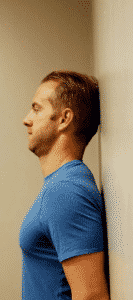
Stand against the wall in a normal position with your heels and back against the wall. Does your head naturally rest against the wall or does it lean forward? If it leans forward, chances are your neck is a bit more forwards than we would like it to be.
2. Shoulder position. Are your shoulders hunched forwards? Here’s an easy way to tell. Stand tall like you normally would. Look at your hand position. Are your hands to the side of the body naturally or do they rest a little towards the front of the body (Are your palms facing backwards at all)? If you notice them towards the front a bit more, you are likely to have forward shoulders which can lead to impingement, pain, and other various issues.
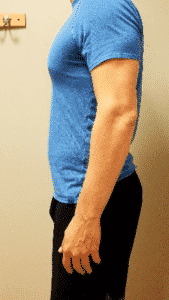
3. Hip Position. A simple way to evaluate this is to look at your waistband in a standing position. Does it stay level or tilt forwards? Most people likely fall somewhere in between. If it tilts forwards a bit, it likely means your lower back is carrying a lot more tension than your lower abdominal muscles. This puts some serious strain on your back. This is also critical for weightlifting because hip extension is critical in most lower body lifts. If you can’t achieve that in a standing position, it’s much harder to achieve in a dynamic movement.
4. Foot Position. Check out your feet from a standing position. Pay special attention to how weight is distributed. Is it towards the front, the back, or the sides of your feet? Does one side feel more weight bearing than the other?
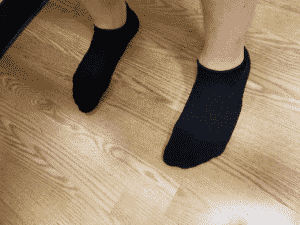 Ideally you want weight distributed evenly through the heels of your feet and the balls of our feet on both sides. Unfortunately, as we go through day to day life, we shift in various ways. Most often people tend to struggle shifting weight towards the outside of their left foot which causes more pressure on the right side and leads to many imbalances over time.
Ideally you want weight distributed evenly through the heels of your feet and the balls of our feet on both sides. Unfortunately, as we go through day to day life, we shift in various ways. Most often people tend to struggle shifting weight towards the outside of their left foot which causes more pressure on the right side and leads to many imbalances over time.
The Three Crucial Posture Fixes
Fix #1: Breathing
Restoring proper breathing is the basic and best way to begin proper alignment. Breathing helps to reposition your ribs in proper alignment and relax tense muscles while you maintain a proper posture. The exercise I have found to be the best is 90/90 breathing:
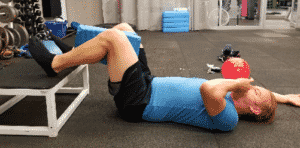
To do this, you’ll need a balloon and something to squeeze (like a pillow or foam roll or anything a bit dense).
1. ie flat on your back with your legs 90 degrees against the wall.
2. Squeeze a pillow or object between your legs above the knees at the thigh.
3. Push down with your heels on the platform. Push your back into the ground as well, causing the hips to slightly raise off the ground.
4. Blow up a balloon. First, take a 4 count going in through your nose and blow up the balloon with an 8 count going out. After the 8 count, continue exhaling for another 2-3 seconds at the end.
5. Repeat this 5 to 8 times.
Fix #2: Stretching
Stretching plays a critical role in helping to relax overactive muscles and areas so that we can achieve proper movement and posture. Here are two “go to” ways to relax muscular tension that tends to pull you forward.
Box Hip Flexor Stretch. This is a great stretch that creates a good position that works to relax our tight hip flexors and gives us a little forward hip tilt to counteract the backwards hip tilt that can lead to pain
The simple way to do this:

* Position yourself near a box, step, platform, anything you can bring your leg up to at a slight angle.
* Position your top leg on the platform rotated slightly towards the body. You should feel like you are turning in one direction with your hips on the side of the top leg.
* Tighten your abdominals as the stretch begins to set in.
* Take 5 deep breaths, focusing on breathing in through your nose (4 count) and out through your mouth (8 count).
* Switch sides.
Cobra Stretch. Why do I like the Cobra Stretch so much? If you think about it, it trains the opposite of everything that assists with bad posture at the moment. In essence the cobra pose is taking everything into the opposite end range from a more slouched or hunched position. Now, this is a slightly modified version from traditional cobra stretches, as we are up on the hands instead of the forearms(2).

When doing the cobra pose, use the same breathing patterns described as above and make sure the abdominals stay tight as we want to minimize tension in the lower back. If you do feel back pain, modify the starting position to your elbows and see if that adjusts. Don’t be too aggressive with this movement.
Now these strategies above are simply a few of hundreds of different ways. These will not instantly fix your posture. I believe Tom Myers has said it can take 18-24 months to make changes like this to your posture. But if you have tension in your neck or hips one day and these can temporarily alleviate it, why not?
Take It To The Next Level

About The Author
 A frequent guest speaker to Fortune 500 companies, Darin Hulslander is a fitness industry veteran who has helped thousands of people lead better lives.
A frequent guest speaker to Fortune 500 companies, Darin Hulslander is a fitness industry veteran who has helped thousands of people lead better lives.
He blogs at This Is Performance.
References:
1. Boyle, Michael, Mark Verstegen, and Alwyn Cosgrove. Advances in functional training: training techniques for coaches, personal trainers and athletes. Santa Cruz, CA: On Target Publications, 2015. Print.
2. Reinold, Mike. “The Best Postural Stretch?” Mike Reinold. Mike Reinold https://mikereinold.com/wp-content/uploads/MikeReinold-Small-Signature-Logo-2017-red.png, 29 Nov. 2016. Web. 02 Aug. 2017.
3. Myers, Thomas W. (2011). Anatomy Trains. London: Urban & Fischer.



